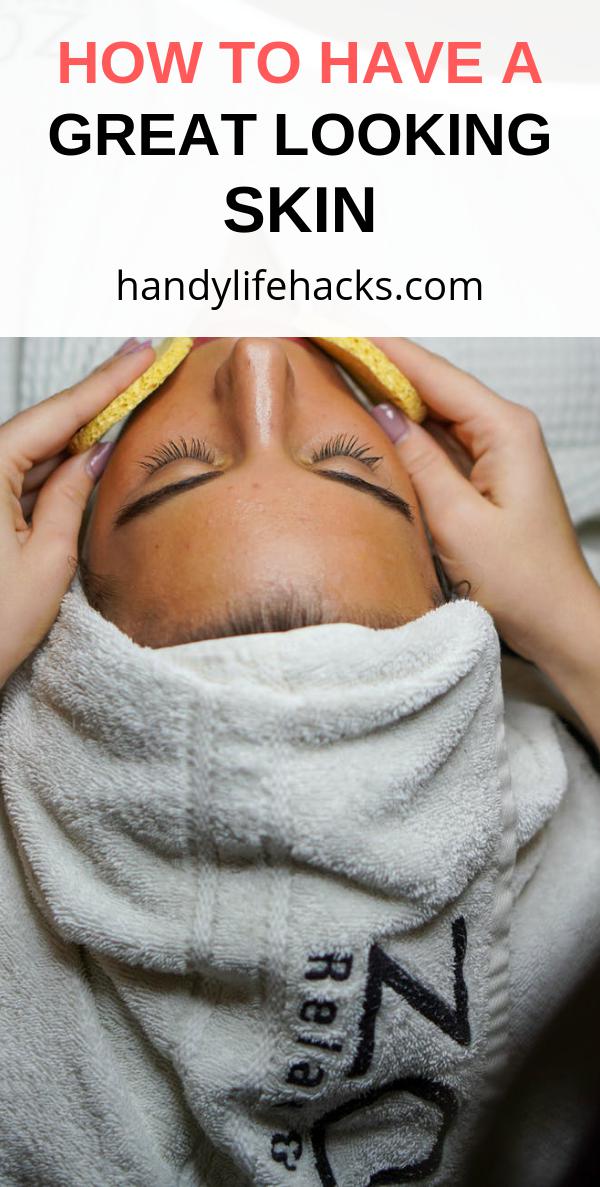
Great skin is something that nearly everyone can achieve. Our skin is affected by our:
Genes
Inner nutrition – what we eat and drink
Exercise
General health and well-being
Emotional health
Outer nutrition – how we take care of our skin
The environment

While we can’t alter our genes, we can improve our skin by making the necessary adjustments in the areas we can influence. Read on to discover the basic components of a healthy outer nutritional plan for your skin.
If you seriously want great skin the very first thing to do is wear a hat and good quality sunscreen when out in the sunshine. Having said that, let’s move on to understand the next three basic foundations of great skin.
If you want your skin to look and feel great, careful cleansing is very important. This should be done first thing in the morning and last thing at night to remove pore-clogging dirt.
Don’t cleanse enough and you could find yourself prone to spots. Cleanse too often and you could be stripping away essential oils and be susceptible to dry skin or even eczema.
Understanding your skin type (normal, dry, or oily) and using a cleanser to match is the best foundation for great-looking skin. Remember to rinse your face with warm water after using a cleanser, as any residue will continue to work on the skin if not completely removed.
Our grandmother’s used soap and water isn’t that good enough?
Soap is not very good at removing makeup because it does not contain enough oils to dissolve the staying power that most cosmetics have today.
Remember the ‘tight’ feeling after you have washed your face with soap? Soap can be very drying on your skin and may wash away essential oils.
Another reason not to use soap is that it is not matched to the natural balance of our skin. Soap is generally alkaline, whilst skin is naturally acidic.
The second step to great outer nutrition for your skin is to tone. Toners are designed to remove any last traces of cleanser, while also helping to tighten and refine pores and prevent the build-up of dead skin cells.
After toning your skin should feel and look revitalized and refreshed, and ready to be moisturized. Again you will need to apply a toner that matches your skin type.
The third foundation step is to apply moisturizer to help restore the moisture loss caused by the drying effects of sunlight, central heating, wind, cold, and pollution.
A good daytime moisturizer would contain a sunscreen and will be easily absorbed into the skin. At night, you should use a richer, more nourishing cream, as this is when your skin more readily absorbs moisture.
Despite the plethora of products on the market and the myriad of additives. The most important ingredient of any moisturizer is water! If water is just splashed on the skin it will not say there.
Moisturizers are basically oil and water emulsions which contain a humectant (a substance added to another to make it moist), which attracts water and helps ‘fix’ it in the upper layers of the skin.

Moisture that is lost from the skin needs to be replaced quickly so that the surface of the skin is kept both soft and smooth. The living cells in the layers need water so that they will not shrivel up and die.
A moisturizer can protect the skin by providing a barrier between the skin and the external environment. It also prevents the loss of moisture from the deeper layers of the skin.
Should people who have oily skin use a moisturizer?
Moisturizers are particularly recommended for people with dry skin but everyone can benefit from using a moisturizer. You simply need to ensure that you choose the correct moisturizer for your skin type. People with oily skin should choose a moisturizer that hydrates their skin whilst helping absorb any excess oil.




